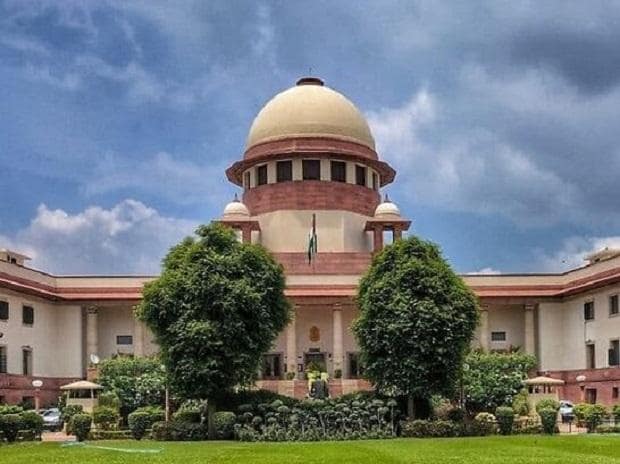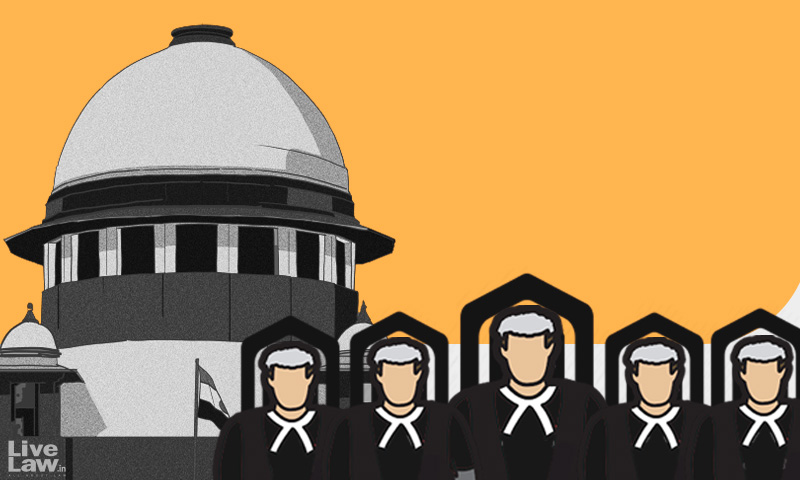Supreme Court to hear plea challenging collegium system for judge appointment

Supreme Court to hear plea challenging collegium system for judge appointment. On Thursday, Chief Justice of India D.Y. Chandrachud agreed to list a writ petition to reconsider the current collegium system of judicial appointments to the Supreme Court and High Courts.
The petition sought the reintroduction of the National Judicial Appointments Commission, or NJAC, which briefly gave the government equal standing with the judiciary in the appointment of several judges to constitutional courts before being overturned by the Supreme Court in 2015.
The petition follows Law Minister Kiren Rijiju’s recent verbal attacks on the collegium system, which he called opaque.
The petitioner-in-person, advocate Mathews J. Nedumpara, and also other lawyers claimed that the Constitution Bench’s decision in October 2015 violated the “will of the people” by the main invalidating the 99th Constitutional Amendment Act, which established the NJAC mechanism.
The 2015 judgment should be declared void ab initio, according to the petition, because it reinstated the collegium system. The petitioners claim that the collegium system is a “synonym for nepotism and favoritism.”
Repeated requests to the Centre to develop an alternative mechanism to the collegium system were said to have gone unanswered, prompting the petitioners to turn to the Supreme Court.
“The NJAC received unanimous assent from both Houses of Parliament and the 21 State Assemblies, with the exception of Shri Ram Jethmalani’s lone dissenting vote.”
“Judges are appointed and transferred solely through legislative and executive policy.” It was entirely unjusticiable. As a result, the petition argues, “it is incumbent on the government and the opposition to restore the NJAC and take all necessary steps.”
Chief Justice Chandrachud stated during the mention that the collegium system was established by a court decision. The collegium system was established in 1993 by a nine-judge Bench decision. The CJI also questioned whether a writ petition could be used to challenge a decision.

The judicial appointment process, according to the petition, should be transparent and open, with vacancies announced and applications accepted from “all eligible and desirous” candidates. The general public should be able to voice their concerns about the candidates.
“The judicial appointment collegium system has resulted in the denial of equal opportunity to petitioners and thousands of lawyers who are qualified, meritorious, and deserving of consideration.” “A mechanism for collegium substitution is urgently required,” according to the petition.
Why is this in the news for the Supreme Court?
Due to squabbles between the judiciary and the executive, as well as the slow pace of judicial appointments, the collegium system has recently been in the news.
What is the collegium system, exactly?
The original constitution makes no mention of a collegium.
Supreme Court – According to Article 124, the President of India appoints Supreme Court judges after consulting with the Chief Justice of India (CJI) and any other judges he deems appropriate.
The Chief Justice and four of the Supreme Court’s most senior judges comprise the collegium. Elevation appointments, in which High Court judges are appointed to the Supreme Court, or direct appointments, in which experienced lawyers are appointed directly, are two options for these appointments.
According to Article 217, High Court judges are appointed by the President in consultation with the CJI, the Governor of the State, and the Chief Justice of that court.
In the event of a transfer, the President, after consulting with the CJI, may transfer a judge from one High Court to another.
The High Court collegium is made up of the Chief Justice of the High Court and two other senior judges.
The high court collegium only makes recommendations to the Supreme Court collegium on judicial appointments.
A collegium of the CJI and two of the Supreme Court’s most senior judges makes the final decisions.
This collegium of the three most senior SC judges also decides on HC judge transfers across the country.
What became of the collegium system?
The Constitution gives the President the authority to appoint judges to the Supreme Court and High Courts, as well as to transfer judges between High Courts.
The President was required to consult with appropriate authorities such as the CJI or the chief justice of the high court (acting on the advice of the council of ministers).
Its goal was to reduce the executive component of the appointment process and eliminate any political influence.
1981 – First Judges Case (SP Gupta Case) The Supreme Court ruled that the term “consultation” cannot be interpreted as “agreement.”
As a result, the decision of the CJI was not binding on the executive.
In the Second Judges Case, 1993, the court overruled its previous decisions and determined that “consultation” meant “concurrence.”

This means that the President is bound by the CJI’s advice on appointment matters.
The CJI, on the other hand, was to issue the opinion only through a body of senior judges known as the “collegium,” as the court described it.
Third Judges Case, 1998 – The court clarified that the collegium would consist of the CJI and four senior colleagues – Appointments to the Supreme Court CJI and two senior colleagues.
In addition, for HCs, the collegium would consult with other senior SC judges who had previously served in the HC in question.
The judgments are silent on whether or not the opinions of the consultee-judges are binding on the collegium.
Through the 99th constitutional amendment, the government attempted to replace the collegium with the National Judicial Appointments Commission (NJAC).
The NJAC also included the Union Minister for Law and Justice and two eminent persons, in addition to the CJI and the next two senior most SC judges. Fourth Judges Case (2015) – The court ruled that the judiciary’s primacy in appointing judges was written into the Constitution’s basic structure.
It also ruled that NJAC was unconstitutional because it gave politicians equal say in appointing judges to constitutional courts.
What are the issues with the operation of the collegium?
Appointments are perceived as a closed-door affair with no prescribed norms for eligibility criteria or even the selection procedure.
The public has no idea when and how a collegium meets, or how it makes decisions, because there are no official minutes of collegium proceedings.
Nepotism and favoritism – There have been numerous allegations of nepotism and favoritism, with collegium judges recommending their close relatives.
The lack of an institutional mechanism to ensure diversity on the bench is a problem in the judiciary.
In collegium selections, SCs, STs, OBCs, and minorities are vastly underrepresented.
Non-filling of vacancies – Although Supreme Court justices frequently discuss the issue of pending cases, they do nothing to resolve the issue.
Differences of opinion – Conflicting opinions among collegium members impede the operation of the collegium system.
While CJI Lalit wanted the recommendations for Supreme Court appointments to be circulated, two judges on the Collegium preferred in-person discussions.
Issues with certain conventions – By convention, once a recommendation for the successor to the CJI’s office is made, the Collegium ceases to make decisions.
Because the CJI is appointed by seniority, many have short tenures, and such conventions may slow decision-making.
The Memorandum of Procedure (MoP)
The government collaborated with the Chief Justice of India to create the Memorandum of Procedure.
It establishes the procedure for appointing Supreme Court and other High Court judges.
It was first published in November 1947 and has been updated since then.
All appointments must be recommended by the collegium, according to the Memorandum of Procedure for Supreme Court Appointments.
This recommendation is then forwarded to the Central Government for appointment via the Law Minister, then to the Prime Minister, and finally to the President.
A High Court collegium must make a recommendation to the state’s chief minister and governor, according to the MoP for High Court Appointments.

The governor will forward the recommendation to the Union Minister of Law and Justice, who will consider it before forwarding it to the CJI, based on the chief minister’s advice.
The CJI should forward the recommendation to the Union Minister of Law and Justice after receiving notification from the Supreme Court’s two senior-most judges.
It will be presented to the Prime Minister, who will recommend an appointment to the President.
In 2015, the Supreme Court asked the government to draft a new Memorandum of Principles to increase transparency, but the court and the government were unable to reach an agreement.
edited and proofread by nikita sharma




